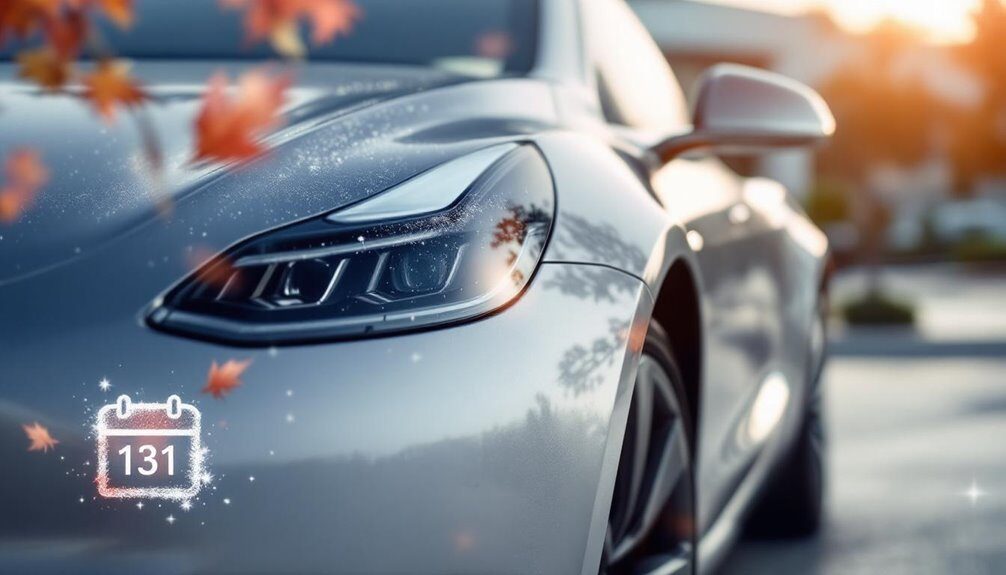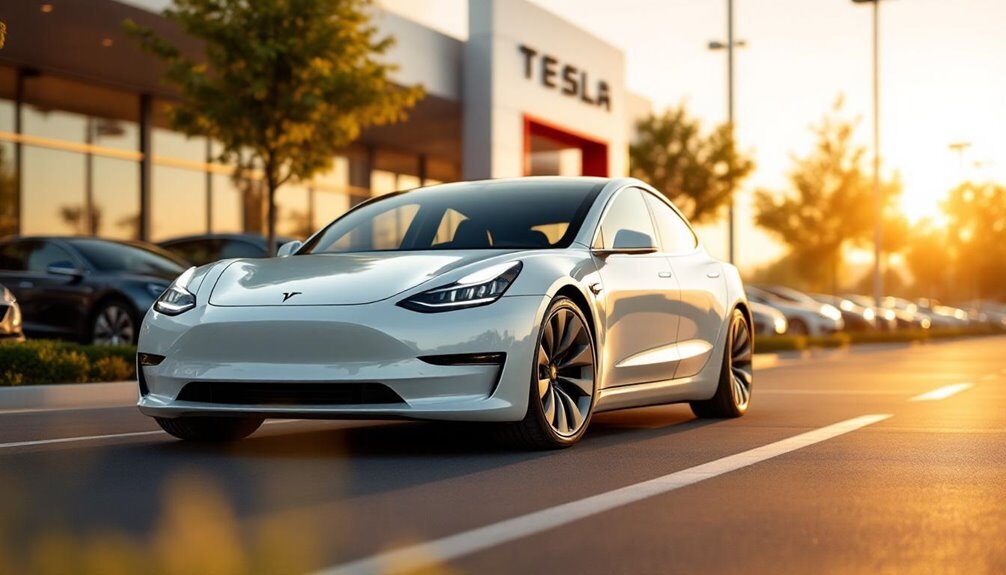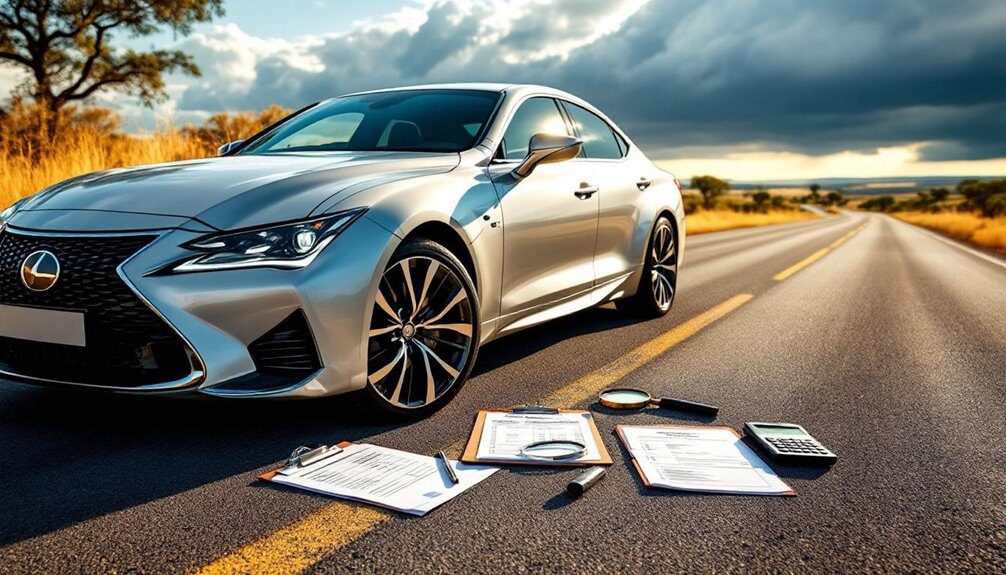You’re looking at a buyer’s market right now—South Africa’s cheapest cars for 2026 start around R176,999 and climb to roughly R224,900 for entry-level automatics, with the real winners being models that nail the trifecta of low upfront cost, fuel efficiency that won’t drain your wallet, and enough features to make you forget you’re driving budget transport. The Renault Kwid, Suzuki S-Presso, and Tata Tiago dominate the bottom end. But here’s the kicker: total cost of ownership matters far more than sticker price alone—factor in fuel economy, maintenance, and actual resale value, and the ranking shifts pretty dramatically.
Toyota Vitz: The Most Affordable New Car in South Africa
Picture yourself shopping for a new car in South Africa with a modest budget. You’ve heard enough about vehicles that cost what a house deposit would set you back. The Toyota Vitz changes that equation. You can drive one home from around R178,800, making it the cheapest new car available locally. The base manual model gives you five seats, a 32-litre fuel tank, and the dependability Toyota’s known for—without the eye-watering expense. Want an automatic gearbox instead? The XR AMT sits at roughly R224,900.
What really stands out is how little fuel this car actually burns. You’re looking at somewhere between 4.2 and 4.4 litres per 100 kilometres. That matters because it directly shrinks what you spend at the petrol pump each month. The 1.0-litre petrol engine won’t set any speed records, but it keeps your overall running costs genuinely modest. That efficiency compounds over time—a year of driving a thirsty SUV versus the Vitz creates a real difference in your pocket. Current listings show 2025 models available from major dealers like Durban South Toyota and Nic Bottari Toyota, with some priced competitively around R194,900 for manual variants.
There’s another practical advantage worth mentioning: Toyota’s service network sprawls across the country. Finding a dealer or getting genuine parts isn’t a hassle. This widespread presence means you won’t struggle with maintenance or repairs, which matters far more than most people realise when you’re buying an affordable vehicle. For comparison, dealerships offering nationwide vehicle delivery ensure you can access support wherever you are in South Africa. You need reliability you can actually access without driving hours to find it. When seeking trusted automotive care in your region, experienced dealers like Autobahn Motors provide comprehensive maintenance and repair services to keep your vehicle running smoothly.
Put simply, the Vitz delivers exactly what you need without the price tag that makes you hesitate.
Suzuki S-Presso: Compact Efficiency at an Unbeatable Price
You’re looking at a car that’ll sip fuel like it’s rationing—4.4 litres per 100km with the AMT—whilst your wallet stays pleasantly thick at prices starting from R203,900.
The S-Presso’s 1.0L Dualjet engine with its clever dual variable valve timing isn’t winning any drag races (49 kW, let’s be honest), but it’s engineered to keep your running costs lean and your trips between fuel stops pleasantly long. With a kerb weight of just 750kg, this lightweight frame contributes directly to that exceptional fuel economy.
For city gridlock and tight parking spots, you’ve basically found the sweet spot where affordability, efficiency, and actually-useful features like reverse parking assist don’t feel like a cruel joke. The new-generation HEARTECT platform provides structural protection that ensures safety remains uncompromised even at this exceptional price point. Regular scheduled service maintenance will help extend your vehicle’s lifespan and keep it performing at its best. At Autobahn Motors, our expert technicians can ensure your S-Presso receives routine maintenance and regular check-ups to keep it running at peak efficiency.
Unmatched Fuel Economy Performance
When it comes to getting the most kilometres from a tank, the Suzuki S-Presso delivers genuinely impressive results. The automatic version manages 4.4 L/100km, whilst the manual achieves 4.6 L/100km—figures that put it well ahead of most competitors. That matters because fuel costs eat into your budget, especially if you’re commuting daily or navigating city traffic. The 1.0-litre engine exists for one purpose: maximum efficiency. Pair that with either a 5-speed AMT or manual gearbox, then add the Auto Stop Start system that kills the engine when you’re stationary, and you’ve got a vehicle that genuinely refuses to waste fuel.
Honestly, only the Celerio and Toyota Vitz come close to matching what the S-Presso achieves. Everything else falls noticeably short. You’ll find yourself at petrol stations far less often, which means more time actually driving instead of refuelling. For anyone covering long commutes or battling through daily city congestion, this lightweight design keeps the car responsive whilst your fuel bills shrink considerably. In South Africa’s current market, that’s difficult to rival. Given that petrol prices increased by almost 25% over the last five years, maximising fuel efficiency has become essential for budget-conscious buyers. Regular routine maintenance services will help preserve the S-Presso’s exceptional fuel economy over time. If you’re looking to schedule a service appointment, Autobahn Motors can help ensure your S-Presso maintains peak fuel efficiency performance.
The savings accumulate quickly—over a year, you’re looking at meaningful money back in your pocket, which is exactly why fuel efficiency genuinely matters when choosing a vehicle. With a starting price of R178,900, the S-Presso combines affordability with exceptional economy, making it the most cost-effective choice for daily drivers.
Affordability Meets Smart Features
Fuel efficiency matters, sure, but it means nothing if you can’t actually buy the car. The Suzuki S-Presso cuts through the excess and gives you genuine features at a price that won’t leave you skint.
Look at what you’re actually getting for your money:
- 1.0 GL+ MT S-Edition from £205,900
- 9-inch touchscreen with Apple CarPlay and Android Auto
- Dual front SRS airbags on every model
- ABS with EBD stops your wheels locking up under heavy braking
- ESP with hill-hold assist keeps you planted on tricky terrain
This is where modern technology meets real-world budgeting. You’re not buying some gutted-out banger stripped of anything useful. For drivers seeking comprehensive peace of mind, professional brake repairs and regular maintenance services can further enhance your vehicle’s safety profile. Keeping your brake system maintained through routine inspections ensures optimal stopping power when you need it most.
The S-Presso lets you keep both—proper safety features and smartphone integration—without having to raid your savings account. That’s the bit that counts. The Engine Auto Stop Start feature also reduces fuel consumption during traffic stops, stretching your budget even further. You get a compact car that refuses to make you pick between clever tech and financial sense.
City Driving Perfect Match
Navigating congested city streets demands a vehicle that won’t fight you at every turn. The Suzuki S-Presso excels here because its compact 3565 mm length and tight 4.5 m turning radius mean you can slip through traffic without constantly second-guessing your positioning. When you spot a narrow parking space between two cars, you actually feel confident attempting it rather than circling the block looking for something bigger. This matters because wasted time hunting for parking adds genuine frustration to your daily routine.
The lightweight construction—ranging from 726 to 775 kg—translates to responsive steering and braking. You feel the road without the sluggish heaviness that larger vehicles impose, which becomes noticeable when you’re making quick decisions in unpredictable urban traffic.
Fuel consumption becomes meaningful in city driving where you’re constantly accelerating and braking. The 1.0-litre Dualjet engine delivers 4.4 litres per 100 km with the AMT gearbox. You’ll genuinely notice the difference in your monthly fuel costs compared to larger competitors. When maintenance time comes around, access to extensive inventory of genuine OEM parts ensures you can keep your S-Presso in peak condition without delays or compromises on quality.
The Auto Stop-Start system cuts your engine during traffic lights, reducing both emissions and fuel waste during those frustrating delays.
Inside, 239 litres of boot space handles your weekly shopping trips and regular errands without requiring multiple journeys. The reverse sensors and optional parking camera eliminate the anxiety of manoeuvring in tight spaces—you see exactly what’s behind you rather than guessing based on mirror angles. For comprehensive maintenance and optimal tyre performance in urban environments, consider booking professional tyre services to keep your S-Presso running safely. The S-Presso simply removes the friction from urban ownership, letting you focus on getting where you need to go.
Tata Tiago: A Practical Hatchback for Budget Buyers
Looking for a decent hatchback without spending a fortune in South Africa? The Tata Tiago deserves serious consideration. You’re looking at around R185,000 to get behind the wheel, and you’re genuinely getting solid value for that outlay.
What you’re actually getting
The engine does the job well enough—a 1.2-litre unit producing 85 bhp and 113 Nm of torque. It won’t set your heart racing, but it handles everyday driving without fussing about.
You can choose between a 5-speed manual or an AMT transmission, depending on whether you prefer working the clutch yourself or letting the car sort it out.
On fuel consumption, you’ll see around 19 kmpl with the petrol engine, which matters when you’re filling up regularly. If you’re serious about keeping fuel costs down, the CNG variant hits 28 kmpl—a genuine game-changer for those watching every penny.
The Global NCAP gave it a 4-star safety rating, which means you’re not compromising on protection when you choose budget motoring.
Interior practicality
The cabin feels surprisingly spacious for a car at this price point, making it decent for family duties.
You get keyless entry and push-button start as standard, features you’d typically expect to pay more for. The 10.25-inch touchscreen integrates both Android Auto and Apple CarPlay, so you’re not stuck with outdated infotainment.
The 242-litre boot space actually fits real belongings—shopping, luggage, that sort of thing—rather than being a token gesture.
This is straightforward transport that does what it promises. No unnecessary frills, no surprises when the repair bills arrive. Just dependable, practical motoring that respects your budget.
Suzuki Celerio: Best Fuel Economy in the Budget Segment
If you’re after a car that won’t have you queuing at the petrol pump every other day, the Suzuki Celerio deserves a proper look. There’s genuine substance behind the hype. The real draw here is the fuel efficiency—the AMT version manages 4.2 litres per 100 kilometres, which makes it South Africa’s most economical five-door petrol hatchback you can actually buy.
The K10C Dualjet 1.0-litre engine with Variable Valve Timing does the heavy lifting. What matters is that Auto Stop-Start Technology cuts the engine during stationary traffic, which genuinely reduces what you’re spending on fuel over a week or month. Consider your commute: if you’re stuck in Johannesburg traffic for an hour each way, that technology alone saves you money without you doing anything different.
You’re looking at entry-level pricing from R188,900, and you get flexibility with both manual and automatic gearbox choices. The cabin accommodates five passengers without fuss. There’s a seven-inch touchscreen that works with Apple CarPlay, so your phone integrates properly without additional gadgets cluttering your dash.
What makes the Celerio particularly practical is its lightweight construction—under 850 kg—which means the engine works efficiently without straining. A lighter car needs less energy to move, so the fuel consumption reflects that physics straightforwardly. You’re not paying extra for unnecessary weight, which is why a small family that needs reliable transport without the financial burden of constant refuelling will find real value here.
Renault Kwid: SUV-Inspired Design Without the Premium Cost
You’re looking at an SUV that doesn’t cost like one—the Renault Kwid gives you that raised stance, bold grille, and commanding road view without emptying your wallet at R176,999.
But here’s the reality: you’re trading some safety features found on pricier competitors for that affordable crossover appeal, since higher trims get the electronic stability control that base models skip.
It’s a smart move if you want the SUV look and practical boot space (279 to 620 litres, depending on seat configuration) without the premium price tag that usually comes attached.
Affordable Crossover Appeal
Most crossovers demand a serious financial commitment—but the Renault Kwid throws that expectation out the window. You get genuine SUV character without the wallet-draining price tag. What makes it work comes down to a few smart choices.
The driving position sits noticeably higher thanks to 184 mm of ground clearance, which matters when you’re navigating city streets or rougher terrain. It genuinely changes how you feel behind the wheel. The exterior design plays into this too—angular headlights and a muscular body shape signal capability rather than compromise. LED daytime running lights and a rugged bumper finish the look without feeling try-hard, whilst the rear spoiler adds practicality by actually improving aerodynamics rather than just looking the part.
Size becomes your advantage here. The compact footprint makes parking in cramped urban spots straightforward, something larger crossovers simply can’t manage. You’re not fighting with every trip to the high street or squeezing into tight residential spaces.
Practicality gets its due as well. The 279-litre boot handles everyday shopping and weekend gear comfortably. Fold the seats down and you’ve got 620 litres to work with—genuinely useful when you need it. Rear passengers don’t feel squeezed, and five people fit without anyone perching uncomfortably. This matters because too many budget vehicles force you to choose between cost-saving and basic comfort. The Kwid refuses that trade-off.
In today’s market, finding a crossover that delivers what buyers actually want—decent space, proper visibility, decent looks—without demanding a second mortgage is genuinely difficult. The Kwid manages it.
Budget-Friendly Safety Trade-offs
When you’re shopping for an affordable car, you’ll quickly discover that safety features come at a cost. The question isn’t whether you’re making trade-offs—it’s which ones you’re willing to accept.
The base petrol models strip out several safety features that appear as standard on pricier variants. You won’t find rear airbags on entry-level trims, which matters because they protect rear passengers during frontal collisions. Advanced driver assistance systems like automatic emergency braking don’t show up either.
Electronic stability control, tyre pressure monitoring, and traction control—features that help you maintain grip in wet conditions and prevent skids—typically sit locked behind higher trim levels. The basic models also often leave you without a rear-view camera and parking sensors, which actually makes a real difference when you’re squeezing into tight spaces or reversing in busy car parks.
That said, you’re not getting a dangerously stripped-down vehicle. Anti-lock braking systems and electronic brake-force distribution come fitted across every model, which prevents your wheels from locking up during emergency stops.
The ground clearance sits between 172 and 184 millimetres, giving you better visibility of hazards in urban areas and protecting the undercarriage on rough roads. Hill assist makes driving on steep inclines less exhausting, whilst speed alerts gently remind you when you’re creeping over the limit through residential zones.
You’re not settling for a safety compromise. You’re simply prioritising differently according to your budget and driving needs.
Proton Saga: Saloon Comfort at Entry-Level Pricing
The Proton Saga delivers genuine saloon practicality without demanding a premium price tag. You get a proper four-door vehicle with enough legroom for five adults to sit comfortably, rather than feeling squeezed into a cramped box.
The 1.5-litre engine produces 120 PS and punches out respectable torque, giving you enough grunt for everyday driving without feeling sluggish in town or on the motorway. Fuel consumption sits between 4.9–5.1 L/100 km depending on whether you opt for the CVT or manual transmission. The CVT variant particularly impresses on fuel economy, which matters when you’re filling up weekly and watching petrol prices fluctuate.
Safety features come as standard rather than hidden behind expensive packages. All variants include six airbags, which provide meaningful protection in a collision. The Level 1 ADAS system includes autonomous emergency braking—this actively prevents accidents by detecting obstacles and applying the brakes if you don’t react in time. Electronic stability control works constantly to keep the car planted, especially valuable on wet British roads.
The 420-litre boot swallows weekly shopping trips and weekend luggage without fuss. You’ll find keyless entry across the range, making life simpler when your hands are full, and wireless Apple CarPlay integrates your phone seamlessly without needing cables cluttering the cabin. Electronic stability control comes as standard, not as an optional extra you need to pay for.
The trade-off is straightforward: cloth upholstery rather than leather, basic rather than premium materials throughout. But that’s precisely how Proton keeps prices sensible. You’re buying a practical saloon engineered honestly, with no inflated costs or unnecessary frills.
Suzuki DZire: Stylish Saloon Alternative for New Buyers
Looking for a sedan that actually feels modern? The Suzuki DZire breaks away from the tired designs you see everywhere. Built in India, it delivers contemporary styling without forcing you to take out a second mortgage. Under the bonnet sits a 1.2-litre engine that genuinely sips fuel—you’ll get 4.4 litres per 100km with the manual gearbox, or 4.6 on the CVT. Sure, it won’t set your pulse racing, but that’s rather the point. You get dependable performance that won’t leave you stranded or constantly visiting the petrol station.
The entry-level GA model starts at R229,900, which makes it genuinely accessible for first-time buyers. Stretch to the GL+ variant and things get more interesting—you unlock alloy wheels that actually look decent, a proper touchscreen infotainment system, plus both Apple CarPlay and Android Auto connectivity.
Safety features matter here, and Suzuki understood that. You’re getting six airbags across the cabin, ABS to stop you effectively in emergency braking, electronic stability control, and on the pricier trims, a rear-view camera so reversing doesn’t feel like a guessing game.
What makes the DZire genuinely compelling is that it doesn’t ask you to compromise on essentials. The practicality is there—decent boot space, comfortable rear legroom for passengers, and controls that make sense rather than burying functions in confusing menus. The styling actually stands out from the grey soup of typical city cars.
If you’re shopping for your first proper sedan and don’t want to spend a fortune or sacrifice reliability, the DZire genuinely delivers what it promises.
Suzuki Swift: Enhanced Features and Brand Reliability
Looking to move beyond the DZire without spending a fortune? The Swift is worth your consideration. You’ll get a lightweight 1.2-litre 3-cylinder engine that doesn’t guzzle fuel—expect around 3.9 to 4.4 L/100 km. For everyday driving, that’s genuinely solid performance.
What actually comes in the package:
- Six airbags fitted as standard across every trim level, which matters because side-impact protection significantly reduces injury risk in collisions
- ABS combined with Electronic Brakeforce Distribution as baseline equipment, giving you better stopping power on wet or loose surfaces
- A 7.0-inch touchscreen on GL models that handles your basics, or jump to the 9.0-inch version on GLX for easier navigation and app integration
- LED projector headlamps with “Guide me home” functionality that illuminate your path after you’ve parked
- 145 mm ground clearance designed specifically for South African road conditions, so you won’t scrape over potholes or rocky terrain
You’re looking at entry pricing from around R227,900. That’s sensible money.
Suzuki backs this with a five-year warranty because they’re confident the mechanics will hold up. The resale market treats the Swift fairly well thanks to Suzuki’s service centres spread throughout the country—parts availability isn’t an issue, and labour costs stay reasonable. It’s fundamentally a compact, practical car that won’t punish you at the service station.
Hyundai Grand i10: Spacious City Car With Smart Connectivity
Stuck in Johannesburg traffic jams? The Hyundai Grand i10 won’t make you feel boxed in. You get five proper seats with rear seats that split 60/40—which actually matters when you need to haul stuff alongside passengers.
The interior uses cloth and vinyl trim with black and red touches that’ll hold up well over time, rather than looking shabby within months.
Connectivity comes as standard, which is worth mentioning because it saves you money on aftermarket installations. Bluetooth syncs your phone without fiddling about, USB ports let you charge on the move, and auxiliary inputs cover older devices.
Both front and rear USB sockets mean your passengers aren’t fighting over a single charging point on longer journeys.
The engine gives you choices depending on your needs. The 1.2L four-cylinder produces 61 kW with usable torque that actually performs in real traffic conditions, not just on paper.
Fuel consumption sits around 5.6 L/100km in genuine driving scenarios—manufacturers rarely get this right, but Hyundai did.
The 37-litre tank stretches to roughly 700 km between fill-ups, which matters when you’re navigating Johannesburg’s sprawling layout.
The hatchback manoeuvres through tight spaces without drama, and you can actually organise your cargo sensibly.
This car works for city life because it handles what cities throw at you—congestion, tight parking spaces, and the need to carry varied loads without compromise.
Renault Triber: Seven-Seater Value for Growing Families
If the Hyundai Grand i10’s five seats feel cramped when you’ve got kids in tow, regular family visits, or relatives who need ferrying about, the Renault Triber changes things. It’s a genuinely practical seven-seater that doesn’t just promise space—it delivers it.
The 1.0-litre petrol engine (52-53 kW) won’t win any speed records, but that’s the point. It sips fuel efficiently whilst you’re hauling your entire crew around, which matters when petrol prices fluctuate. You get decent range between fill-ups without sacrificing practicality.
Flexible seating arrangements
The middle row slides backwards and forwards depending on whether you need more legroom or boot space that day. The seats recline if someone wants a nap, and they fold completely flat when you don’t need them.
The third-row seats actually pop out entirely—you remove them when it’s just the two of you and suddenly you’ve got a van-like cargo area. This matters because real families need this kind of adaptability.
Proper storage capacity
You get 625 litres with everything folded down. That’s enough for a week’s shopping, a pushchair, luggage, and a dog without anything getting crushed.
Climate control reaches all three rows, so your back-seat passengers aren’t sat in a sauna whilst the front seats enjoy cool air.
Safety and modern conveniences
Dual airbags, ABS, and electronic stability control come as standard. The reversing camera means reversing becomes less of a guessing game, especially useful when you’re manoeuvring around parked cars with kids strapped in.
The eight-inch touchscreen includes Android Auto and Bluetooth, so your phone connects properly rather than sitting in your lap.
Ground clearance sits at 182mm, which handles most speed bumps and rough roads without scraping. You can choose between a manual or AMT gearbox depending on whether you prefer traditional control or automated convenience.
Real-world fuel economy ranges from 17 to 20 km per litre depending on driving habits and traffic conditions.
It’s straightforward, purposeful, and genuinely good value for families who need the space without pretentious trim levels or inflated pricing.




